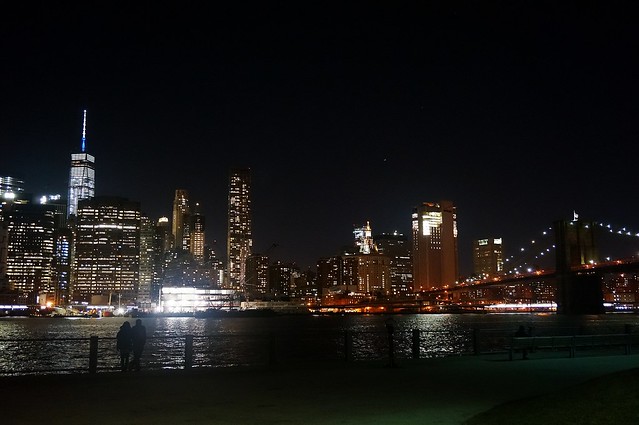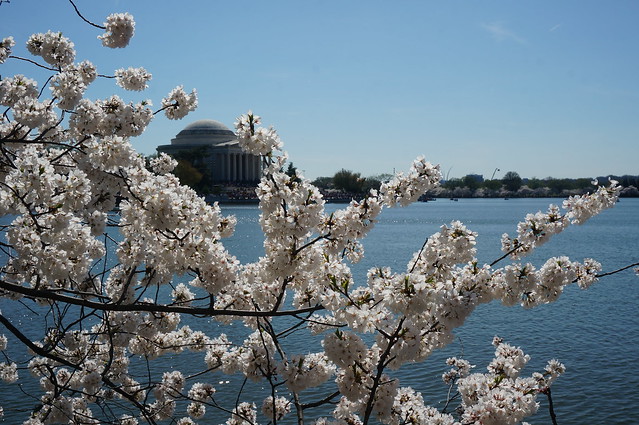 For one of our last free weekends to travel, I went with six other Michigan State students to Marrakech, Morocco. We all wanted to travel somewhere entirely different and had heard that Marrakech was one of the nicest cities for tourists to visit in Morocco. Since US citizens do not need visas to enter Morocco, we grabbed some RyanAir tickets and spent the night before our early flight in the Barajas airport.
For one of our last free weekends to travel, I went with six other Michigan State students to Marrakech, Morocco. We all wanted to travel somewhere entirely different and had heard that Marrakech was one of the nicest cities for tourists to visit in Morocco. Since US citizens do not need visas to enter Morocco, we grabbed some RyanAir tickets and spent the night before our early flight in the Barajas airport.
We arrived in Marrakech bright and early around 9:00am on Friday, 30 July, 2010, where it was already as hot as Madrid is during the daytime. After exchanging my euros for the second time this summer, we bartered with a taxi driver to get to the hostel. Since tourism is big in Morocco, we had no trouble finding people to speak English or Spanish with us (other languages spoken include Arabic, French, Italian, and German). At first when the taxi driver dropped us off, we thought we were taken for a ride, but after talking with him further, he lead us through the old neighborhood alleyways to the door for our hostel. We thought street signs were bad in Spain, but it’s nothing compared to Marrakech! I don’t remember seeing a single street sign or traffic light in the parts of the city we visited.
Our hostel turned out to be a riad, an old Moroccan mansion converted into a hostel for travelers. Our hostel, Riad Massin, was beautiful with an amazing staff and by far one of the cheapest hostels I’ve stayed at, only 11 euro per night for ensuite rooms. After checking into our rooms, the hostel owner brought out mint tea for us as he gave us maps and explained the city. In the heat of the day, we headed out to the Majorelle Gardens. On our way, we got lost trying to follow the map and wandered around for a while until we found a small shop to buy water. The Majorelle Gardens were beautiful, with fountains and bright blue buildings everywhere. After the gardens, we went to a nearby restaurant for our first sample of authentic Moroccan cuisine. The tagine and cous cous were amazing and the prices were a nice change from Madrid’s restaurants.
After the Majorelle Gardens, we returned back to the hostel for a siesta on the roof lounge area. After the 120 degree heat died down a bit, we ventured back out to the Koutoubia mosque, the souks, and the main square, Jemmaa el-Fna. The mosque takes its name from an ancient book market that was located in front of the mosque. The souks are the markets on the edges of the square selling anything from spices and food products to clothing and handmade textiles and crafts. After wandering through the souks for a few hours, we went back out into the square just as it was getting dark.

The plaza at night transforms from a maze of merchants, locals, and tourists, into hundreds of outdoor restaurants. Traditionally, the square has numbered food booths that serve similar types of Moroccan tagine and cous cous. After eating dinner at booth number one (the best food booth there), we went up through a restaurant building to a roof-top café that overlooks the entire square with a beautiful view of the mosque. The evening prayer drifted out over the plaza but the pace didn’t slow down. We wove back through the plaza to return to the hostel. Once back at the hostel, we went up to the roof with the other guests at the hostel.
The next day, we decided to leave early in order to avoid the heat, but found that Saturday was hotter than Friday. Our first destination was the Sa’adin Tombs, with burial dates from 1557 to 1792. The tombs were neglected until their re-discovery by the French in 1917. The tombs were beautiful, with intricate mosaics and carvings everywhere. After the tombs, we wandered back through the edges of the spice souks to visit the Bahia Palace. On the way, we found a hole-in-the-wall shop where a man was weaving colorful blankets in the back. The walls of the store were overflowing with other scarves and blankets in all sizes. We spent some time in the store and then went back out to the street and went to the Bahia Palace. The palace was built between 1894 and 1900 in the popular Alawi architectural style for Ahmed Ibn Moussa (Ba Ahmed). In addition to the impressive rooms and courtyards in the palace, there is also an equally impressive garden.

From the palace, we took more time to go back through the spice souks, even visiting one stand where the worker took the time to explain to us, in English, what everything was and how it was used. He even let the women in our group sample the perfumed soaps. From the spice souks, we went to a restaurant on the way back to the hostel. After lunch, we went back to the hostel where we divided into groups to go to the hamams. After the hamams, we went back to the hostel, where the women had henna done by one of the women who took us to the hamams. The woman doing the henna was very talented and told us that she taught herself henna artwork at home. While the henna was drying, we went back up to the rooftop to relax until the weather cooled down enough for dinner. While we were on the rooftop, the two women who had taken us girls to the hamam and did our henna came up to the roof to say goodbye to us. They knew we were leaving the next morning and wanted to wish us a safe trip before they left work for the day. They even made the boys take a group picture of us.
We went back to the souks as it started cooling off and wandered around all of the shops with some of the other guests from our hostel. As people started closing their shops, we were amazed at the number of people riding motorcycles and mopeds through the walkways which we had incorrectly assumed were just for pedestrians. Although Booth #1 did have amazing food, we decided to try something different than the previous night and went to Booth #22, which was good but not as good as Booth #1. After dinner, we walked to the fresh orange juice stands in the square, where we all bought a glass. Turns out, it was watered down, resulting in half the group (luckily not me) getting pretty ill for the next two days.
We returned to the hostel after spending more time wandering around the square and went back to the rooftop where all of the other guests had gathered. We stayed up well into the night but did manage to sleep before having to wake up at 5:00am to get ready to go back to the airport. We were about a half hour away from missing our flight because our driver was late and there was a discrepancy regarding the actual boarding time on our tickets, but we ended up making our tiny RyanAir flight back to Madrid.
Morocco was amazing and so refreshingly different from any place that I have previously visited. If possible, it would be great to return to Marrakech and then to travel around to more of the cities. If there had been more time, we could have taken a two day camel ride out to the Atlas Mountains, so that will be something on the list for next time. An additional benefit of Morocco being 120+ degrees Fahrenheit each day was that when we returned to Madrid, the 100+ Madrid heat didn’t seem so bad.
 After spending a couple more days in Madrid, we decided to take a day-trip to Segovia, a nearby city, on August 11, 2010. Segovia is well-known for its Roman aqueduct as well as its cathedral. However, my favorite place in Segovia is the Monastery of Parrel, on the northeastern edge of the city. We visited all of the places that I visited on June 5, 2010, as described in my previous post. The second trip to Segovia went as well as the first, except that we were able to find our way around the city more easily this second time. The change in climate was clearly visible from June to mid-August. When my friends and I first visited Segovia in early June, the entire area was green and flowers were blooming. On the second trip, everything had turned brown and dried up.
After spending a couple more days in Madrid, we decided to take a day-trip to Segovia, a nearby city, on August 11, 2010. Segovia is well-known for its Roman aqueduct as well as its cathedral. However, my favorite place in Segovia is the Monastery of Parrel, on the northeastern edge of the city. We visited all of the places that I visited on June 5, 2010, as described in my previous post. The second trip to Segovia went as well as the first, except that we were able to find our way around the city more easily this second time. The change in climate was clearly visible from June to mid-August. When my friends and I first visited Segovia in early June, the entire area was green and flowers were blooming. On the second trip, everything had turned brown and dried up.






 8:09 PM
8:09 PM
 J-Mad
J-Mad

 Posted in:
Posted in: 



